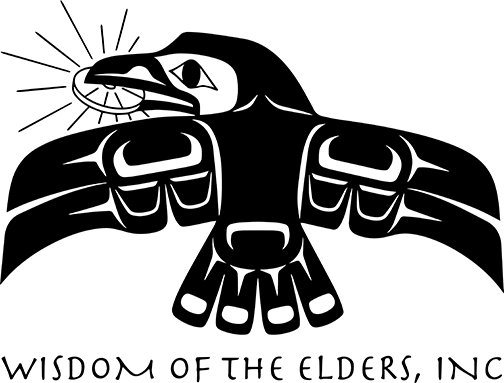Arle Neskahi:
Many native songs and ceremonies are sacred. Many of them were given as gifts from the spirit powers, from the mountains, the rivers, what Lewis and Clark may have seen as empty wilderness.
In Sacred Landscapes, Judy Bluehorse Skelton explores native perspectives on the land and water, plants and animals that Lewis & Clark encountered along their journey.
Judy Bluehorse Skelton:
When Lewis and Clark set out in search of the fabled Northwest Passage, the United States was not yet thirty years old. Their travels west, into what Thomas Jefferson called the “wilderness,” would take them through rivers, prairies, mountains and meadows and finally to the great water, the Pacific Ocean.
The people they met, representing over fifty different Native American tribes, had called this land home for thousands of years. They knew the plants, animals, rivers and mountains intimately. Tribal stories and oral histories told of their significance to the people and the roles they played in creating a good life. Customs and ceremonies honored the abundant gifts of the plants and animals, as well as the mountains, waterfalls, lakes and springs. All were revered for their sacredness.
These beliefs and practices reflected the respectful understanding of what was needed to maintain balanced relations between humans and nature. The natural world was not a separate world from humans. Tribal languages had no word for “wilderness.” A unifying theme for these diverse native communities was the importance of balancing and respecting “nature,” the natural world, all of creation. It’s what kept this land so pristine and healthy for thousands of years prior to European contact. Good relationships had sustained the people, native people, since the beginning of time.
Water, water is a recurring feature in the Lewis & Clark story. For Native people water is sacred, not only because we need it to live, but because of its healing power, its capacity to purify and cleanse. Your first “herb,” your very first medicine, is water. It purifies on the emotional and spiritual level as well as the physical. It clears toxins and refreshes the spirit. In many tribal traditions we “go to water” for many blessing ceremonies, go to water for new baby, go to water for coming of age, initiation to womanhood or manhood, go to water for an anniversary, after a loss, for forgiveness, and ultimately for transformation.
In most cultures of the world, when we go back far enough in time, we find the people and their communities acknowledged similar relationships with the sacredness of water. This is still carried on today with many religious and spiritual practices around the world.
Water, water is sacred. I remember visiting a Catholic church for the first time and noticing the small basin of water in the entryway. holy water. This is sacred to them. I thought, it must have been very conflicting for native peoples as the Europeans arrived, to observe how they built their towns on the waterways and dumped their waste into the rivers. But the water they reserved in the little basin in the church was still sacred. It appeared their daily activities and business practices didn’t recognize water’s sacredness outside the church.
I was invited to speak at a high school science class. They were studying ethno botany and the teacher wanted me to share plant medicine. provide a Native American perspective. As I walked into the classroom, I noticed two different mobiles hanging from the ceiling. One said “animate” the other “inanimate.” The animate mobile had picture cut out from magazines of puppies, children, an elderly couple holding hands. Interestingly, the inanimate mobile had pictures of a waterfall, Mount Hood, cedar trees, a meadow, and large rocks. I thought, in western culture, the human and his domesticated animals are animate, alive. The rest is inanimate, without feeling, power or spirit. In native culture, it is the waterfalls, rivers, trees, mountains, rocks that are most sacred, most revered. Living long lives and repositories of great wisdom, they have the most to teach us.
And so that inspired my talk with the students. The two mobiles hanging there side by side, served as a beautiful metaphor for seeing the world from two different perspectives. The students began to understand that if viewed as an inanimate thing devoid of sacred relationships, it was easier to treat rivers and lakes, trees and mountains poorly.
Mighty rivers from the Missouri to the Columbia were home to thousands of people. With westward expansion who fished for the salmon, would in time come to represent cheap electricity for growing communities. The dams built along this and other rivers would decimate salmon populations and the healthy traditional food staple of native peoples.
Today, more people are making the connection that the health of the people is directly tied to the health of all water. Native and non native people are working together to restore these precious lakes, rivers and streams. And the gift of water to forgive, heal and transform continues..
Neskahi:
Judy Bluehorse Skelton practices and teaches her craft in order that her relationship to plant people shall carry through to generations. This is Wisdom of the Elders. I’m Arlie Neskahi.

